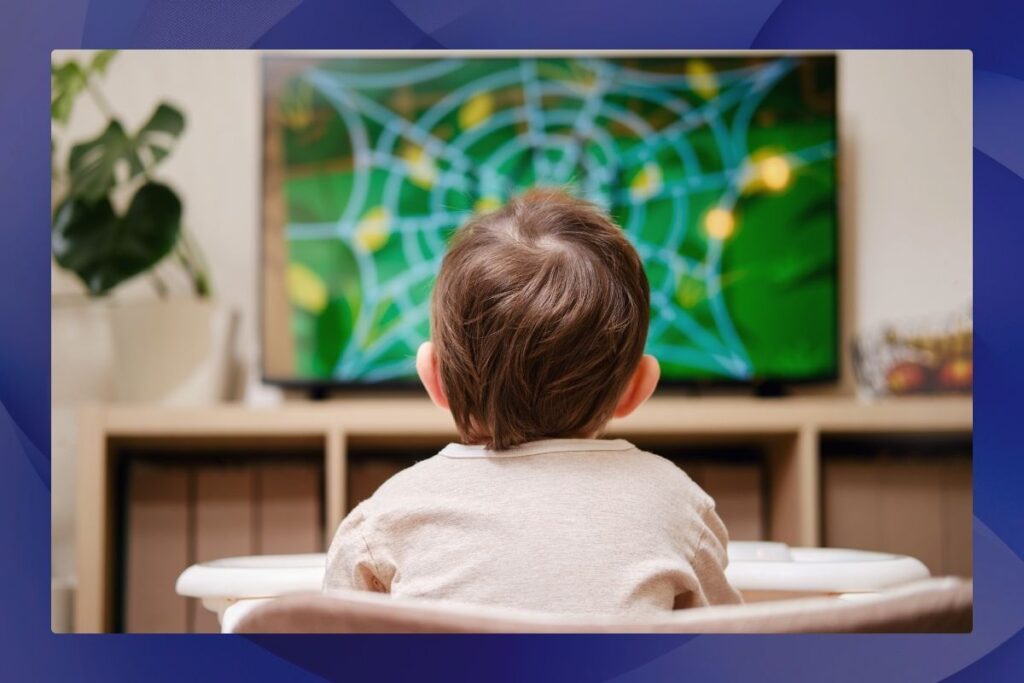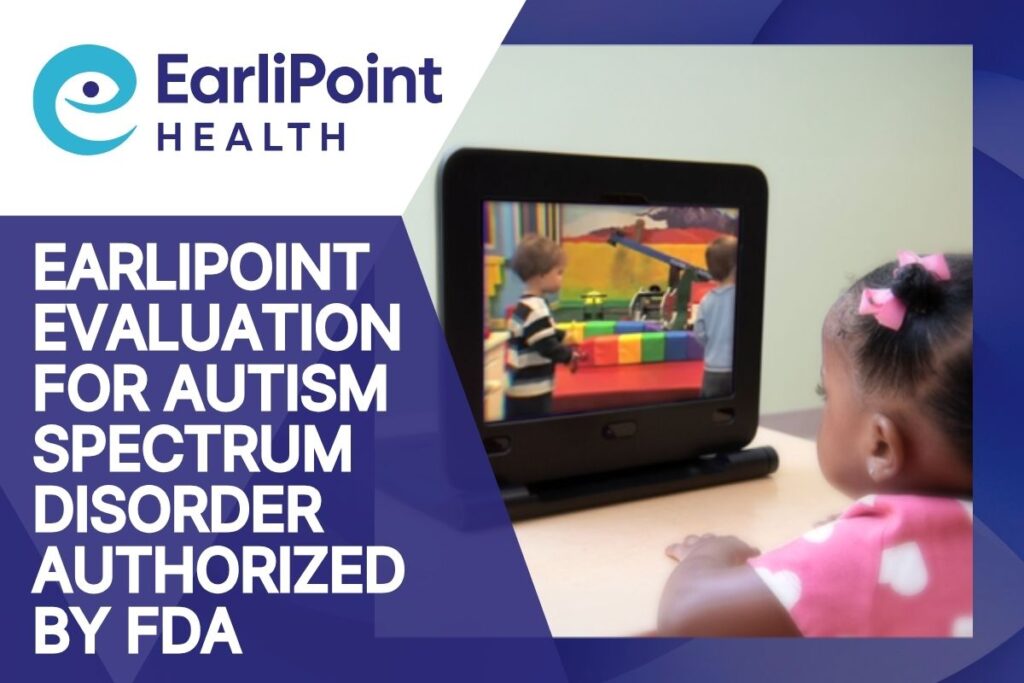Understanding Early Social Development
Eye contact is one of the earliest ways babies connect with their caregivers. From infancy, most babies naturally seek out faces, making eye contact during feedings, playtime, and interactions. However, some babies may avoid or struggle with eye contact, leading parents to wonder if this is a normal phase or a sign of a deeper developmental difference.
This article explores why eye contact matters in early development, what variations are typical, and when it might be a sign of autism or another condition.
Why Is Eye Contact Important?
Eye contact plays a crucial role in social and cognitive development. Research suggests that babies begin recognizing faces within the first few days of life and typically engage in mutual eye contact by two months of age (Jones & Klin, 2013).1 This ability helps infants bond with caregivers, understand emotions, and develop early communication skills. Babies who make frequent eye contact tend to have stronger social engagement as they grow, while those who avoid it may require additional support (Bradshaw et al., 2021).2
Normal Variations in Eye Contact
It’s important to recognize that babies develop at their own pace, and occasional avoidance of eye contact isn’t necessarily a red flag. Here are a few common reasons a baby might not make eye contact:
- Fatigue or Overstimulation – Newborns and young infants often turn away when they are tired or overwhelmed (Johnson et al., 2014).3
- Early Temperament Differences – Some babies are naturally more reserved and take time to engage visually (Clifford & Dissanayake, 2009).4
- Interest in Surroundings – Babies may focus more on objects, sounds, or movements around them instead of faces.
However, if your baby consistently avoids eye contact beyond six months of age and does not respond to social cues like smiling or facial expressions, it might indicate an underlying developmental concern (Zwaigenbaum et al., 2015).5
Eye Contact and Autism: What to Look For
Avoiding eye contact can be an early sign of autism spectrum disorder (ASD), but it is not the only indicator. Other early signs that may accompany reduced eye contact include:
- Lack of facial expressions in response to social interactions (APA, 2022).6
- Limited interest in people, including parents and caregivers (Chawarska et al., 2016).7
- Failure to follow objects or gestures, such as pointing (Wetherby et al., 2004).8
- Delayed babbling or speech development (Landa, 2018).9
- Preference for repetitive behaviors, such as rocking or hand flapping (Lord et al., 2020).10
If your child exhibits multiple signs in addition to avoiding eye contact, it is recommended to discuss these observations with a pediatrician or developmental specialist.
When Should You Be Concerned?
If your baby shows any of the following patterns consistently, it may be beneficial to seek an evaluation:
- Avoids eye contact most of the time, even with familiar caregivers
- Does not smile or show facial expressions in response to interaction (CDC, 2023).11
- Fails to recognize parents’ voices or react to social cues (Jones et al., 2017).12
- Displays unusual repetitive behaviors or rigidity in routines (Rogers, 2018).13
Early intervention can make a significant difference in a child’s development. The American Academy of Pediatrics (AAP) recommends autism screening at 18 and 24 months as part of routine well-child visits (AAP, 2019).14
What You Can Do to Encourage Eye Contact
Parents can encourage social engagement and eye contact through everyday interactions:
- Face-to-Face Play – Get down to your baby’s level and use exaggerated facial expressions during playtime (Schreibman, 2021).15
- Sing and Talk to Your Baby – Babies are naturally drawn to familiar voices. Use animated speech and sing songs while maintaining eye contact (Tager-Flusberg et al., 2019).16
- Use Interactive Games – Games like peek-a-boo and pat-a-cake help babies practice eye contact in a fun way (Dawson et al., 2000).17
- Read Expressive Books – Picture books with faces and emotions encourage visual engagement (Siller & Sigman, 2002).18
Next Steps: Seeking Professional Guidance – visit our Parent page
If you’re concerned about your baby’s eye contact and social engagement, consider discussing it with your pediatrician. They may recommend a developmental screening or refer you to an early intervention specialist for further evaluation.
Many programs offer support and guidance, including:
- Early Intervention Services (EI) – Available in most states for children under three years old (IDEA, 2004).19
- Developmental Pediatricians – Specialists trained to assess early social and communication skills (Zwaigenbaum et al., 2015).20
- Autism Diagnostic Clinics – Offer in-depth evaluations for children showing early signs of ASD (Lord et al., 2020).21
Final Thoughts
While avoiding eye contact can be a normal part of development, persistent avoidance may be an early sign of autism or another developmental difference. Trust your instincts as a parent—if something feels off, don’t hesitate to seek guidance. Early support and intervention can help children build essential social and communication skills, improving long-term outcomes.
By staying informed and proactive, you’re taking an important step in understanding your child’s unique needs and ensuring they receive the best possible support.
For comprehensive resources and guidance tailored for parents and caregivers– visit our Parent page.
References
[1] Jones, W., & Klin, A. (2013). Attention to eyes is present but in decline in 2–6-month-old infants later diagnosed with autism. Nature, 504(7480), 427-431.
[2] Bradshaw, J., et al. (2021). The importance of eye contact in autism spectrum disorder. Journal of Autism and Developmental Disorders, 51(6), 1985-2001.
[3] Johnson, M. H., et al. (2014). The development of social attention in infants. Developmental Science, 17(5), 747-756.
[4] Clifford, S. M., & Dissanayake, C. (2009). The early development of social attention in ASD. Autism Research, 2(3), 134-148.
[5] Zwaigenbaum, L., et al. (2015). Early screening of autism spectrum disorder. Pediatrics, 136(Supplement_1), S10-S40.
[6] American Psychiatric Association (2022). Diagnostic and Statistical Manual of Mental Disorders (5th ed., text rev.).
[7] Chawarska, K., et al. (2016). Early behavioral signs of autism. Current Opinion in Pediatrics, 28(1), 85-92.
[8] Wetherby, A. M., et al. (2004). Social communication profiles of young children with ASD. Journal of Autism and Developmental Disorders, 34(3), 373-382.
[9] Landa, R. J. (2018). Diagnosis of autism before age 3. Nature Reviews Neurology, 14(3), 133-142.
[10] Lord, C., et al. (2020). Autism Spectrum Disorder (2nd ed.). Oxford University Press.
[11] Centers for Disease Control and Prevention. (2023). Signs and Symptoms of Autism. Retrieved from https://www.cdc.gov/ncbddd/autism.
[12] Jones, W., et al. (2017). Early markers of autism in infants. Pediatrics, 140(2), e20170339.
[13] Rogers, S. J. (2018). Interventions for infants and toddlers at risk for autism spectrum disorder. Annals of Clinical Psychiatry, 30(3), 175-184.
[14] American Academy of Pediatrics. (2019). Autism spectrum disorder: Screening and diagnosis. Retrieved from https://pediatrics.aappublications.org.
[15] Schreibman, L. (2021). The science of early intervention for autism spectrum disorder. Cambridge University Press.
[16] Tager-Flusberg, H., Paul, R., & Lord, C. (2019). Language and communication in autism. Annual Review of Neuroscience, 42, 20-42.
[17] Dawson, G., Meltzoff, A. N., Osterling, J., Rinaldi, J., & Brown, E. (2000). Children with autism fail to orient to naturally occurring social stimuli. Journal of Autism and Developmental Disorders, 30(6), 479-485.
[18] Siller, M., & Sigman, M. (2002). The behaviors of parents of children with autism predict the subsequent development of their children’s communication. Journal of Autism and Developmental Disorders, 32(2), 77-89.
[19] Individuals with Disabilities Education Act (IDEA). (2004). Part C—Infants and toddlers with disabilities. Retrieved from https://sites.ed.gov/idea.
[20] Zwaigenbaum, L., Bauman, M. L., Stone, W. L., Yirmiya, N., Estes, A., Hansen, R. L., … & Wetherby, A. (2015). Early identification of autism spectrum disorder: Recommendations for practice and research. Pediatrics, 136(Supplement_1), S10-S40.
[21] Lord, C., Charman, T., Havdahl, K. A., Carbone, P. S., Anagnostou, E., Boyd, B., … & McCauley, J. B. (2020). The Lancet Commission on the future of care and clinical research in autism. The Lancet, 397(10269), 271-306.




